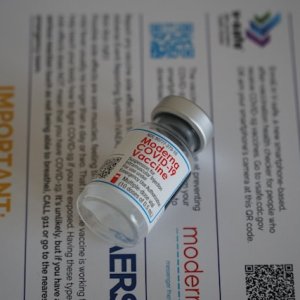
Prenatal Diagnostics
Developed as an additional practice to prenatal diagnostic for parents who risk the transmission of a severe genetic disorder, preimplantation genetic diagnosis (PGD) tests the cellular material from embryos that have been fertilized in vitro. PGD can also tests oocytes, which are gametocytes produced in the ovary during gametogenesis, to determine the risk factor for in vitro fertilization (IVF). While embryos affected by a genetic disorder can be viable, children may suffer from a physical or cognitive disability or even a decreased lifespan. Parents can use prenatal testing to determine whether the fetus is carrying a genetic condition serious enough to merit the consideration of potential termination of the pregnancy. Many parents prefer to avoid such decisions if possible, so PGD is an optimal choice as it negates the need for selective pregnancy termination. PGD is often recommended for potential parents who have a family history of genetic conditions or chromosome problems, those who have a child with a serious genetic condition, or those who have terminated a pregnancy after detection of complications through prenatal testing, but it can be used by any parent who undergoes IVF. The procedure carries the same risks as IVF, including potential damage to the embryo but it is largely considered safe by most physicians. Generally every embryo produced by IVF is tested for these diseases and only those that are found not to carry risk are implanted.
PGD was introduced in the 1990s and initially used to determine the sex of the embryo. This technique continues to be used for diseases only affecting one gender, but it has since evolved and PGD is now used to screen for more than 200 genetic diseases. PGD requires IVF, embryo biopsy and the use of either fluorescent in situ hybridization (FISH) a technique that uses fluorescent probes labeled DNA or RNA strands to hybridize the target DNA sequence to identify and quantify it or polymerase chain reaction on a single cell. It can detect Mendelian disorders, structural chromosome abnormalities, and mitochondrial disorders. In order for parents to carry a reproductive risk either one or both must carry the same autosomal-recessive disorder. If there is no strong family history of the disease and if either of the parents carries a recessive mutation, they may be unaware of the risk until either birth or prenatal testing. In some cases, one or both of the parents carries a dominant mutation of the gene and is thus aware of the risk of passing it to their children. Before PGD these parents had options including using a donor who is not a carrier, adopting a child, or avoiding reproduction. Now PGD can be used to select an embryo with minimal risk.
Generally, the technique is used to test for three different categories of genetic disorders. The first is single-gene disorders, which can be either autosomal dominant, autosomal recessive, or X-linked recessive, and for which the specific mutation is already known. The second refers to X-linked disorders, for which the specific gene mutation is not known but the disorder can be avoided by gene selection. Finally, the third refers to chromosomal rearrangements. PGD is ideal for parents who carry the same autosomal-recessive gene disorder. Common disorders of this kind include Huntington’s disease, Marfan syndrome, sickle cell disease, cystic fibrosis, and spinal muscular atrophy. All of these are life long diseases and their severity varies from person to person, many affecting quality of life and expectancy. PGD is a sophisticated technique that is only currently utilized in specialized laboratories, but there are more than 70 centers in Mexico already offering these tests. José Islas Varela, CEO of Insemer, highlights the importance of preimplantation genetic diagnosis for at-risk couples to determine whether an embryo has a greater chance of suffering from certain genetic diseases. As Varela states, “by mapping all the chromosomes in an embryo, we are able to detect predispositions towards several types of cancer, hypertension, and diabetes, among several other diseases. Our studies provide 99.9% certainty of a healthy embryo but, after implantation, further studies are performed to confirm the fetus health.”
While many genetic disorders can be diagnosed from a single cell, having only one cell limits the scope of the tests. This differs in the case of prenatal diagnosis, as biopsied samples provide hundreds of cells from which doctors can obtain large quantities of genomic DNA. There are also time constraints as results must be available within 12 to 48 hours in order for the embryo to be viable for IVF. Moreover, the test cannot completely eliminate the risk of a genetic disorder as some of these disorders have not been thoroughly studied. Nonetheless the technique is advancing at a rapid speed alongside advances in molecular genetics, thus it is a favorable alternative for many potential parents and, as it improves over time, it will provide a wealth of information.

















